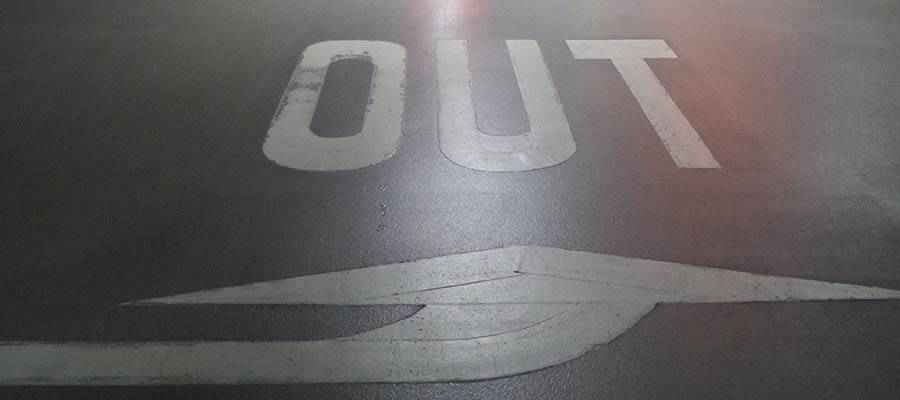The 5 Types of Projects NOT to Include in Your Portfolio
When it comes to designer portfolios, bigger is not necessarily better. While it’s tempting to list each and every project you’ve ever done, it may actually be counterproductive. That is, if you’re using your portfolio as a means to generate new business.
Portfolios can be a terrific sales tool. A good one can show potential clients that you have the talent and experience to get the job done.
It also provides a way to target the kinds of projects you want to work on. That’s why it’s important to carefully consider what should be included and what to leave out.
Today, we’ll reveal the five types of projects that are probably better off in your virtual scrap heap.
Old Projects with Dated Looks
Maybe this one is a bit on the nose. But that doesn’t stop web designers from listing outdated projects in their portfolios.
Over the years, the expectations for what a website should look like have changed quite a bit. And since the web itself has been in the mainstream for nearly three decades, there are a lot of old sites out there. If you’ve been in the industry for a while, it’s easy to rack up a number of projects that are well past their prime.
True, older projects may show your evolution as a designer. But not everyone is going to see it that way. So, unless a website features some breakthrough with functionality – kick those oldies to the curb.

Projects You Had a Small or No Role in Creating
There are occasions where you might have been hired on to play a bit part in a project. Or maybe you’re hosting a website that someone else built. This is fairly common in the freelance space.
Of course, there may be reasons to mention something like this. It could be a famous brand or the role you served was crucial. In those cases, it wouldn’t be inappropriate to include – although it might require a clear explanation of exactly what you did.
Otherwise, how does listing this type of project benefit your business? It’s especially useless for those who market themselves as an outstanding designer or developer.
If you didn’t play a significant role in the design or write some killer code, then it’s not your handywork. This can leave a false impression on visitors and, if the site isn’t so attractive, could make you look bad.

Projects Outside of Your Niche
Just about every web designer has gone through a phase where they’ve taken on projects that weren’t within their specialty. That’s O.K., as we all have to make a living. And besides, it can be fun to dabble in other types of websites.
But if a project is way outside of your niche, it should probably not make its way into your portfolio.
For example, let’s say that your specialty is in building WordPress websites. And there was this one time that you used a different CMS. The experience was fine, but you’d rather not utilize it again. Do you really want to promote this outlier of a project?
The same can be said of sites that don’t fit into your ideal project type. Maybe you hate building eCommerce sites and have decided not to do them anymore. Listing any you’ve done in the past can send the message that you’re looking to build more of them.

Projects That Fall Below Your Ideal Price Point
This may well go hand-in-hand with your preferred niche, as mentioned above. If a project falls well below your typical pricing, you may not want to showcase it.
Not to say that small or low-cost projects can’t be beneficial. They are often a great way for new designers to gain experience. And if you’re looking to attract these smaller gigs, that’s great.
But if you’ve moved on to bigger and better things, it’s important that your portfolio reflect that fact. You don’t want to give prospective clients with really tiny budgets the wrong idea. Eschewing the small stuff will hopefully save you both from wasting time.

Projects That Ended Badly
Breakups are never easy. And a bad breakup with a client can be especially difficult. Instances where trust has been lost or communication is lacking can spoil what might have been (at one point, at least) a solid working relationship.
What’s worse is that you may be really proud of the work you did for them. Yet, keeping this one in your portfolio is akin to displaying a testimonial from someone who now loathes you.
Not to mention that this situation means a site could drastically change without prior notice. Since your ex is likely to move on to a new designer, you never know when a redesign will pop up.
Thus, much like we burn old love letters, we need to distance ourselves from a messy situation.

A Portfolio Should Send the Right Message
One of the common themes here is in using your portfolio to send the right message. Build it to show off your skills – sure. But also keep in mind what each project communicates to those who are viewing it.
When you aren’t picky about the projects you share with the world, it can create the wrong impression. It may say that you’ll take on cheap websites or ones that don’t reflect your niche. They could lead others to think your design work is outdated.
This isn’t to suggest that there can’t be exceptions to the rule. If something about a particular website truly stands out, then that could outweigh age, category or price point. But those are likely few and far between.
It’s also worth noting that things change over time. Your business has likely evolved. And that formerly-new project will age out over time. Therefore, take a periodic look at your portfolio and make sure it mirrors who you are today – not who you were five years ago.
The post The 5 Types of Projects NOT to Include in Your Portfolio appeared first on Speckyboy Design Magazine.





